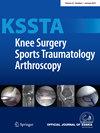Bony alignment decisions affect patient-specific laxity phenotype patterns significantly, independent of the deformity
Abstract
Purpose
While bony alignment phenotype reconstruction became an important part of personalised knee arthroplasty, the knowledge on laxity phenotypes (LPs) is still limited. This study aimed to calculate individual LPs and assess their changes based on bony decisions from different alignment workflows.
Methods
Radiographs and computer-assisted surgery data of 86 knees were imported into a validated knee alignment simulator. Individual bony parameters (medial proximal tibial angle, lateral distal femoral angle and posterior condyle axis) were first introduced. By that, the patient-specific bony phenotype (B-FKP) was implemented, and based on these simulations, the patient-specific laxity phenotype (L-FKP) was defined, calculated and analysed for the total group, as well as for all Coronal Plane Alignment of the Knee (CPAK) subgroups. CPAK I and IV were summarised as varus group; II and V as neutral, and III, VI and IX as valgus group. Identical calculations were then compared for the MA and L-FKP of both workflows. LP was calculated in both extension (L-FKPext) and flexion (L-FKPflex), and a pattern matrix was constructed for all possible L-FKP combinations, enabling a comprehensive distribution analysis. Statistical differences between subgroups and B-FKP and mechanical alignment (MA) workflows were calculated.
Results
B-FKP showed a minimal, non-significant difference for L-FKPext in all subgroups; however, a huge variability in L-FKP pattern analysis. In contrast, MA showed a significant difference for L-FKPext in all subgroups, with a high correlation between L-FKPext and hip–knee–ankle angle. While in MA, 98% of knees showed lateral laxity (L-FKPflex-latlax), in B-FKP, only 56% were L-FKPflex-latlax, with a large variability (31% L-FKPflex-neutr and 13% L-FKPflex-medlax).
Conclusions
Personalised bony resections reduce gap differences for LPext and LPflex independent of the deformity. MA showed a high correlation between deformity and LPext in extension and a uniform lateral laxity in flexion. L-FKP analysis can help to understand the individuality of knees from a soft tissue aspect.
Level of Evidence
Level III.


 求助内容:
求助内容: 应助结果提醒方式:
应助结果提醒方式:


